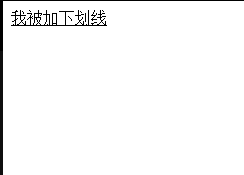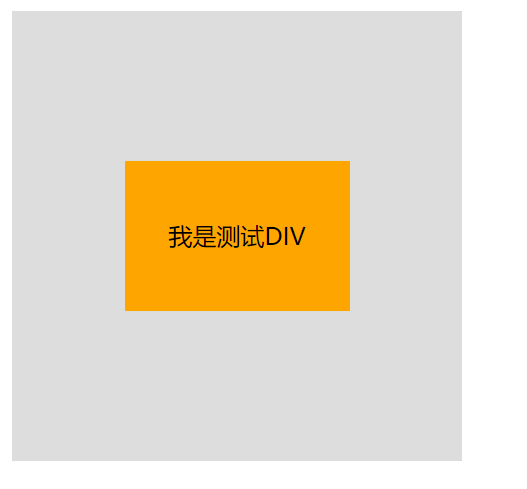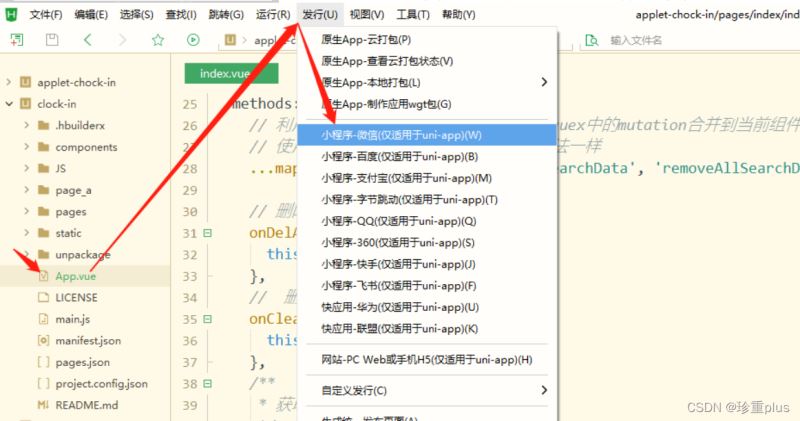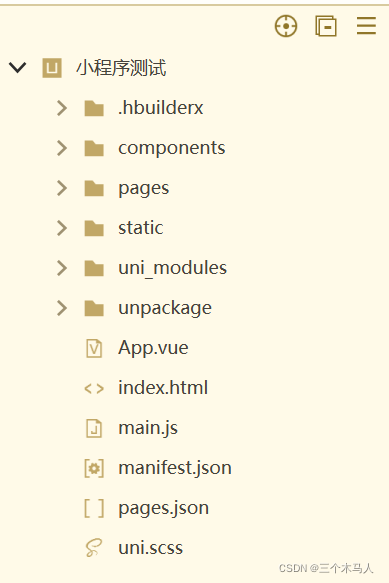day01安装 vue//npm安装npm install vue//jsscript src=node_modules/vue/dist/vue.js/script//js 最新的vue script src=https://cdn.jsdelivr.net/npm/vue/dist/vue.js/scripthelloWorlddiv i...

day01
安装 vue
//npm安装
npm install vue
//js
<script src="node_modules/vue/dist/vue.js"></script>
//js 最新的vue
<script src="https://cdn.jsdelivr.net/npm/vue/dist/vue.js"></script>
helloWorld
<div id="app">
{{ message }}
</div>
var app = new Vue({
el: '#app',
data: {
message: 'Hello Vue!'
}
})
v-html v-text
v-text 显示差值表达式内容一样
<span v-text="msg"></span>
<span>{{msg}}</span>
v-html 可以渲染html 模板
<span v-html="html"></span>
v-cloak , v-if , v-show
v-cloak 设置这个属性,防止网速慢,差值表达式闪烁问题
<!--css-->
[v-cloak] {
display:none !important;
}
<!--html-->
<div v-cloak>
{{ message }}
</div>
v-if是动态的向DOM树内添加或者删除DOM元素;
v-show是通过设置DOM元素的display样式属性控制显隐;
<div id="app-3">
<p v-if="seen">现在你看到我了</p>
</div>
var app3 = new Vue({
el: '#app-3',
data: {
seen: true
}
})
v-bind
v-bind 单项绑定 绑定某一个值 简写(:)
<!-- 绑定一个 attribute -->
<img v-bind:src="imageSrc">
<!-- 动态 attribute 名 (2.6.0+) -->
<button v-bind:[key]="value"></button>
<!-- 缩写 -->
<img :src="imageSrc">
<!-- 动态 attribute 名缩写 (2.6.0+) -->
<button :[key]="value"></button>
<!-- 内联字符串拼接 -->
<img :src="'/path/to/images/' + fileName">
<!-- class 绑定 -->
<div :class="{ red: isRed }"></div>
<div :class="[classA, classB]"></div>
<div :class="[classA, { classB: isB, classC: isC }]">
<!-- style 绑定 -->
<div :style="{ fontSize: size + 'px' }"></div>
<div :style="[styleObjectA, styleObjectB]"></div>
<!-- 绑定一个全是 attribute 的对象 -->
<div v-bind="{ id: someProp, 'other-attr': otherProp }"></div>
<!-- 通过 prop 修饰符绑定 DOM attribute -->
<div v-bind:text-content.prop="text"></div>
<!-- prop 绑定。“prop”必须在 my-component 中声明。-->
<my-component :prop="someThing"></my-component>
<!-- 通过 $props 将父组件的 props 一起传给子组件 -->
<child-component v-bind="$props"></child-component>
<!-- XLink -->
<svg><a :xlink:special="foo"></a></svg>
在将v-bind用于 class和 style时,Vue.js 做了专门的增强。表达式结果的类型除了字符串之外,还可以是对象或数组。
01对象方法:
<div
class="static"
v-bind:class="{ active: isActive, 'text-danger': hasError }"
></div>
data: {
isActive: true,
hasError: false
}
结果渲染为:
<div class="static active"></div>
02数组方法:
<div v-bind:class="[activeClass, errorClass]"></div>
data: {
activeClass: 'active',
errorClass: 'text-danger'
}
渲染为:
<div class="active text-danger"></div>
03 可以用三元表达式
如果你也想根据条件切换列表中的 class,
<div v-bind:class="[isActive ? activeClass : '', errorClass]"></div>
04 数组加对象
这样写将始终添加 errorClass,但是只有在 isActive 是 truthy[1] 时才添加 activeClass。
不过,当有多个条件 class 时这样写有些繁琐。所以在数组语法中也可以使用对象语法:
<div v-bind:class="[{ active: isActive }, errorClass]"></div>
v-on
v-on :绑定事件 简写(@)
<!-- 方法处理器 -->
<button v-on:click="doThis"></button>
<!-- 动态事件 (2.6.0+) -->
<button v-on:[event]="doThis"></button>
<!-- 内联语句 -->
<button v-on:click="doThat('hello', $event)"></button>
<!-- 缩写 -->
<button @click="doThis"></button>
<!-- 动态事件缩写 (2.6.0+) -->
<button @[event]="doThis"></button>
<!-- 阻止默认行为,没有表达式 -->
<form @submit.prevent></form>
<!-- 串联修饰符 -->
<button @click.stop.prevent="doThis"></button>
<!-- 键修饰符,键别名 -->
<input @keyup.enter="onEnter">
<!-- 键修饰符,键代码 -->
<input @keyup.13="onEnter">
<!-- 点击回调只会触发一次 -->
<button v-on:click.once="doThis"></button>
<!-- 对象语法 (2.4.0+) -->
<button v-on="{ mousedown: doThis, mouseup: doThat }"></button>
事件修饰符
<!-- 阻止单击事件继续传播 -->
<a v-on:click.stop="doThis"></a>
<!-- 提交事件不再重载页面 -->
<form v-on:submit.prevent="onSubmit"></form>
<!-- 修饰符可以串联 -->
<a v-on:click.stop.prevent="doThat"></a>
<!-- 只有修饰符 -->
<form v-on:submit.prevent></form>
<!-- 添加事件监听器时使用事件捕获模式 -->
<!-- 即内部元素触发的事件先在此处理,然后才交由内部元素进行处理 -->
<div v-on:click.capture="doThis">...</div>
<!-- 只当在 event.target 是当前元素自身时触发处理函数 -->
<!-- 即事件不是从内部元素触发的 -->
<div v-on:click.self="doThat">...</div>
<!-- 点击事件将只会触发一次 -->
<a v-on:click.once="doThis"></a>
<!-- 滚动事件的默认行为 (即滚动行为) 将会立即触发 -->
<!-- 而不会等待 `onScroll` 完成 -->
<!-- 这其中包含 `event.preventDefault()` 的情况 -->
<div v-on:scroll.passive="onScroll">...</div>
键盘修饰符
<!-- 按下所有键盘都会触发submit方法 -->
<input v-on:keyup="submit">
<!-- 只有在 `key` 是 `Enter` 时调用 `vm.submit()` -->
<input v-on:keyup.enter="submit">
内置的
.tab
.delete (捕获“删除”和“退格”键)
.esc
.space
.up
.down
.left
.right
其他需要键盘码 ,或者全局指定
//例如 112键盘码指向f1
Vue.config.keyCodes.f1 = 112
//使用
<input @keyup.f1="submit">
v-model
单行文本:
<input v-model="message" >
<p>Message is: {{ message }}</p>
复选框
<input type="checkbox" id="checkbox" v-model="checked">
<label for="checkbox">{{ checked }}</label>
Boolean值绑定
<input type="checkbox" v-model="toggle">
####修饰符
.lazy 在默认情况下,v-model 在每次 input 事件触发后将输入框的值与数据进行同步 (除了上述输入法组合文字时)。你可以添加 lazy 修饰符,从而转为在 change 事件_之后_进行同步:
<!-- 在“change”时而非“input”时更新 -->
<input v-model.lazy="msg">
.number 如果想自动将用户的输入值转为数值类型,可以给 v-model 添加 number 修饰符:
<input v-model.number="age" type="number">
这通常很有用,因为即使在 type=“number” 时,HTML 输入元素的值也总会返回字符串。如果这个值无法被 parseFloat() 解析,则会返回原始的值。
.trim 如果要自动过滤用户输入的首尾空白字符,可以给 v-model 添加 trim 修饰符:
<input v-model.trim="msg">
v-for
一个参数 当前对象
<ul id="example-1">
<li v-for="item in items" :key="item.message">
{{ item.message }}
</li>
</ul>
var example1 = new Vue({
el: '#example-1',
data: {
items: [
{ message: 'Foo' },
{ message: 'Bar' }
]
}
})
:key 在2.2.0版本后强烈建议使用 :key 追踪每个节点的身份 性能也能得到提升
<!-- in 等价于 of-->
<div v-for="item of items"></div>
两个参数 : 即当前项的索引。
<ul id="example-2">
<li v-for="(item, index) in items">
{{ parentMessage }} - {{ index }} - {{ item.message }}
</li>
</ul>
var example2 = new Vue({
el: '#example-2',
data: {
parentMessage: 'Parent',
items: [
{ message: 'Foo' },
{ message: 'Bar' }
]
}
})
三个参数: (对象, 对象属性名, 索引)
<div v-for="(value, name, index) in object">
{{ index }}. {{ name }}: {{ value }}
</div>
遍历对象
你也可以用 v-for 来遍历一个对象的 property。
<ul id="v-for-object" class="demo">
<li v-for="value in object">
{{ value }}
</li>
</ul>
new Vue({
el: '#v-for-object',
data: {
object: {
title: 'How to do lists in Vue',
author: 'Jane Doe',
publishedAt: '2016-04-10'
}
}
})
day02
filter
只能在 {{插值表达式}}和v-bind中使用
定义过滤器:全局 ,页面中vm示例都能使用 (|:管道符)
<div id="app">
<h4>{{ msg | msgFilter("我是参数arg") }}</h4>
{{date}}
</div>
Vue.filter("msgFilter",function(msg, arg01){ //第一个参数是msg 数据 ,后面都是传递的参数
console.log(arg);
return msg.replace(/我们/g,"你们"); // /g 全局匹配
})
定义过滤器:局部(私有) , 只有当前vm示例能使用 ,多个过滤器使用 | 分割
<div id="app">
{{date | dataFormat('') | currentLog }}
</div>
new Vue({
el: "#app",
data: {
date: new Date()
},
filters:{
dataFormat(format=""){
let y = data.getFullYear();
let m = (data.getMonth() + 1).toString().padStart(2,"0"); //padStart , padEnd填充字符串(需要长度,用什么填充)
let d = data.getDate().toString().padStart(2,"0");
if (format.toLowerCase() === "yyyy-mm-dd") {
return `${y}-${m}-${d}`
}else{
let hh = data.getHours().toString().padStart(2,"0");
let mm = data.getMinutes().toString().padStart(2,"0");
let ss = data.getSeconds().toString().padStart(2,"0");
return `${y}-${m}-${d} ${hh}:${mm}:${ss}`;
}
},
currentLog(){
consloe.log("currentLog 过滤器被使用")
}
}
})
###directive
全局属性 Vue.directive v-开头的都是vue指令
注册或获取全局指令。 使用: v-my-directive
// 注册
Vue.directive('my-directive', {
//每个function的第一个参数都是绑定的元素 是一个元素的js对象
bind: function (el) { //每当指令绑定上元素会触发这个函数,只执行一次
//在元素刚绑定指令时,还没有插入到dom中去 , 这时候调用focus() 方法无效
//因为元素只有插入dom之后才能获取焦点
el.focus()
},
inserted: function (el) { //元素插入dom中会执行 ,只执行一次
el.focus()
},
update: function () {}, //当节点更新的时候触发 ,可能会执行多次
componentUpdated: function () {}, //指令所在组件的 VNode 及其子 VNode 全部更新后调用。
unbind: function () {} //只调用一次,指令与元素解绑时调用。
})
// 注册 (指令函数)
Vue.directive('my-directive', function () {
// 这里将会被 `bind` 和 `update` 调用
})
// getter,返回已注册的指令
var myDirective = Vue.directive('my-directive')
钩子函数参数
el:指令所绑定的元素,可以用来直接操作 DOM。
binding:一个对象,包含以下 property:
name:指令名,不包括 v- 前缀。
value:指令的绑定值,例如:v-my-directive="1 + 1" 中,绑定值为 2。
oldValue:指令绑定的前一个值,仅在 update 和 componentUpdated 钩子中可用。无论值是否改变都可用。
expression:字符串形式的指令表达式。例如 v-my-directive="1 + 1" 中,表达式为 "1 + 1"。
arg:传给指令的参数,可选。例如 v-my-directive:foo 中,参数为 "foo"。
modifiers:一个包含修饰符的对象。例如:v-my-directive.foo.bar 中,修饰符对象为 { foo: true, bar: true }。
vnode:Vue 编译生成的虚拟节点。移步 VNode API 来了解更多详情。
oldVnode:上一个虚拟节点,仅在 update 和 componentUpdated 钩子中可用。
如果只写bind ,update方法,可以简写
Vue.directive('my-directive', function(el,binding){ });
directives : {
'font':function(el, binding){
}
}
生命周期
示例博客
[外链图片转存失败,源站可能有防盗链机制,建议将图片保存下来直接上传(img-wOvAyj8D-1617427377741)(images\vue生命周期.jpg)]
vue-resource
请求方式:
get(url, [options])
head(url, [options])
delete(url, [options])
jsonp(url, [options])
post(url, [body], [options])
put(url, [body], [options])
patch(url, [body], [options])
options 参数说明:
| url | string | 请求的目标URL |
|---|---|---|
| body | Object, FormData, string | 作为请求体发送的数据 |
| headers | Object | 作为请求头部发送的头部对象 |
| params | Object | 作为URL参数的参数对象 |
| method | string | HTTP方法 (例如GET,POST,…) |
| timeout | number | 请求超时(单位:毫秒) (0表示永不超时) |
| before | function(request) | 在请求发送之前修改请求的回调函数 |
| progress | function(event) | 用于处理上传进度的回调函数 ProgressEvent |
| credentials | boolean | 是否需要出示用于跨站点请求的凭据 |
| emulateHTTP | boolean | 是否需要通过设置X-HTTP-Method-Override头部并且以传统POST方式发送PUT,PATCH和DELETE请求。 |
| emulateJSON | boolean | 设置请求体的类型为application/x-www-form-urlencoded |
get
this.$http.get(url, 参数). then(function(data){ 正确返回方法 }, function(error){ 异常方法 } )
this.$http.get("https://autumnfish.cn/api/joke",{params: {name:"zxy", age: 18}}).then(data=>{
console.log(data.bodyText);
})
axios
示例博客
get
axios.get('http://localhost:8080/user/findById?id=1') //url
.then(function (value) { //成功函数
console.log(value);
})
.catch(function (reason) { //失败函数
console.log(reason);
})
post
axios.post("https://autumnfish.cn/api/user/reg",{username:"盐焗西兰花"}) //url, post请求参数
.then(function(response){
console.log(response);
},function (err) {
console.log(err);
})
发送多个请求 01
function getUser1() {
return axios.get('url');
}
function getUser2() {
return axios.get('url');
}
axios.all([getUser1(), getUser2()])
.then(axios.spread(function (user1, user2) {
})
发送多个请求 02
axios.all([
axios.get('url'),
axios.get('url')
])
.then(axios.spread(function (user1, user2) {
})
day03
动态属性
vue2.6+ 新特性
使用[attr] 动态绑定data中的"attr"
<div id="app">
<p :[attr]="msg">pppppppppp</p>
</div>
const app = new Vue({
el: "#app",
data: {
msg : "这是msg",
attr: "title"
}
})
组件化
注册全局组件
定义组件 方式一
const myComponent= Vue.extend({
template : "<h3>第一个组件</h3>"
})
Vue.component("myComponent" ,myComponent);
定义组件 方式二
Vue.component("login", {
template: '<div><h1>用户登录</h1></div>'
})
定义组件 方式三
<template id="login-template">
<login-info>登录信息提示</login-info>
</template>
Vue.component("login",{
template: "#login-template"
});
注册私有组件(局部组件)
定义组件 方式四
new Vue({
el: "#app",
components: { //局部组件
helloComponent: {
template: "<div>hello</div>" //也可以使用选择器 template的id
}
}
})
展示组件
<component :is="myComponent"></component>
或者
<!-- 首字母 大写的要转换成 ”-小写“ -->
<my-component></my-component>
组件中的data
示例中的data 是一个对象 , 组件中的对象是一个方法返回值必须 是一个对象
const app = new Vue({
el: "#app",
data: {
},
components:{
myComponent : {
template : "<h3>第一个组件{{msg}}</h3>",
data(){
return {
msg: '这是一个消息'
}
}
}
}
})
props
获取自定义属性值 区别于data data(可读可写) props(只读)
<my-component my-title="我是标题" ></my-component>
new Vue({
el: "#app",
components:{
myComponent : {
template : "<h3>第11一个组件{{msg}}</h3>",
data:function(){
return {
msg: '这是一个消息'
}
}
props:{
//使用驼峰命名获取 属性值
myTitle:""
}
// props:["myTitle"]
}
}
})
父组件向子组件传值
通过props
<div id="app">
<my-component :msg="parent"></my-component>
</div>
const app = new Vue({
el: "#app",
data: {
parent: "我是父组件"
},
components:{
myComponent:{
template: "<h3>我是一个子组件==={{msg}}</h3>",
props:["msg"]
}
}
})
$emit
vue中 关于$emit的用法
父组件的方法传递给子组件
<div id="app">
<!--03 使用组件, 使用vm实例的show方法-->
<my-component @func="show"></my-component>
</div>
<!-- 定义组件 -->
<template id="myComponent">
<div>
<h3>我是子组件</h3>
<button @click="myClick">myClick</button> <!--01 所以点击就相当调用了show()-->
</div>
</template>
new Vue({
el: "#app",
methods: {
show() { //04 父组件show方法
console.log("Vue...show()...")
}
},
components: {
myComponent: {
template: "#myComponent",
methods: {
myClick() {
this.$emit("func") //02 子组件用$emit接收 @func
}
}
}
}
})
$ref
$ref : 拿到组件的引用 操作dom
<div id="app">
<input type="button" @click="getElement" value="获取信息" />
<h3 ref="myh3">这里是h3信息</h3>
</div>
const app = new Vue({
el: "#app",
methods: {
getElement() {
console.log(this.$refs.myh3.innerText);
}
}
})
day04
vue-router
router
url中#(hash) 的意义
路径携带 #/ (hash) 实现单页面之间的切换,通过不同的hash切换页面的方式就叫前端的路由(#/login, #/list)
后端的路由就是 所有的url地址,都回对应的服务器上的资源
安装 : npm install vue-router
<div id="app">
<!--访问路由路径href中必须使用hash以#/ 开始-->
<a href="#/login">login</a>
<!--与a标签唯一区别 <router-link> 不支持 target="_blank",如果你想打开一个新标签页,你必须用 <a> 标签。-->
<router-link to="/register">register</router-link>
<!--显示路由试图-->
<router-view></router-view>
</div>
路由基本使用
//登录组件
let login = {
template: "<h1>用户登录</h1>"
}
//注册组件
let register = {
template: "<h1>用户注册</h1>"
}
let router = new VueRouter({
routes:[
{path:'/' , redirect: "/login"}, //打开页面访问/ 就会重定向到/login
{path:'/login' , component: login}, // path:路由路径 component:这个路由显示那个组件
{path:'/register' , component: register}
],
linkExactActiveClass:"myExactActive", //加上激活的类(前者)
linkActiveClass:"myActive" //加上激活的类(后者)
})
const app = new Vue({
el: "#app",
router
})
routes 详细对象参数
/** 属性 详解
path 路径
name 命名路由
component 命名视图组件
components 命名视图组件
redirect 重定向路径
alias 别名
children 嵌套路由
meta 路由元信息 使用$route.meta.属性可以获取
caseSensitive 匹配规则是否大小写敏感?(默认值:false)
pathToRegexpOptions 编译正则的选项
*/
路由嵌套
<div id="app">
<router-link to="/product">product</router-link>
<router-view></router-view>
</div>
<template id="product">
<div>
<h1>商品管理</h1>
<!-- 链接使用 /父路由/子路由 -->
<router-link to="/product/edit">add</router-link>
<router-link to="/product/add">edit</router-link>
<router-view></router-view>
</div>
</template>
const product = {
template: "#product",
}
const add = {
template: "<h3>商品添加</h3>",
}
const edit = {
template: "<h3>商品编辑</h3>",
}
const router = new VueRouter({
routes: [
{
path: "/product",
component: product,
children: [ //children 展示子路由 path前不能加/
{path:"add",component : add},
{path:"edit",component : edit}
]
}
]
})
let app = new Vue({
el: '#app',
router : router
});
路由传参
<div id="app">
<!-- 路由获取参数的两种方式 -->
<router-link to="/login?username=zhaoxingyu&password=123456">登录</router-link>
<router-link to="/register/21/zhaoxingyu">注册</router-link>
<router-view></router-view>
</div>
const login = {
template: `<h1>用户登录---{{$route.query.username}}---{{this.$route.query.password}}</h1>`,
created() {
console.log("参数data", this.$route.query); //?传递的参数都在this.$route.query里面封装
}
}
const register = {
template: "<h1>用户注册---{{$route.params.id}}---{{this.$route.params.name}}</h1>",
created() {
console.log(this.$route.params); //路径参数 / 都在this.$route.params里面封装
}
}
const router = new VueRouter({
routes: [
{ path: "/login", component: login },
//传入的参数会封装成 this.$route.params:{id: 21, name:"zhaoxingyu"}
{ path: "/register/:id/:name", component: register }
]
})
let app = new Vue({
el: '#app',
methods: {},
router: router
});
Components
注册组件 name使用
<div id="app">
<!-- 默认的 name="default" -->
<router-view></router-view>
<router-view name="left"></router-view>
<router-view name="right"></router-view>
</div>
const header = {
template: "<h2>header</h2>"
}
const leftBox = {
template: "<h2>leftBox</h2>"
}
const rightBox = {
template: "<h2>rightBox</h2>"
}
let router = new VueRouter({
routes:[
{path:"/",components:{ //注册进components ,router-view name指定
"default": header,
"left": leftBox,
"right": rightBox
}}
]
})
const app = new Vue({
el: "#app",
router
})
day05
watch
监听data属性值的变化 (不能使用箭头函数)
一个对象,键是需要观察的表达式,值是对应回调函数。值也可以是方法名,或者包含选项的对象。Vue 实例将会在实例化时调用
$watch(),遍历 watch 对象的每一个 property。
var vm = new Vue({
data: {
a: 1,
b: 2,
c: 3,
d: 4,
e: {
f: {
g: 5
}
}
},
watch: { //新的值 , 旧的值
a: function (val, oldVal) {
console.log('new: %s, old: %s', val, oldVal)
},
// 方法名
b: 'someMethod',
// 该回调会在任何被侦听的对象的 property 改变时被调用,不论其被嵌套多深
c: {
handler: function (val, oldVal) { /* ... */ },
deep: true
},
// 该回调将会在侦听开始之后被立即调用
d: {
handler: 'someMethod',
immediate: true
},
// 你可以传入回调数组,它们会被逐一调用
e: [
'handle1',
function handle2 (val, oldVal) { /* ... */ },
{
handler: function handle3 (val, oldVal) { /* ... */ },
/* ... */
}
],
// watch vm.e.f's value: {g: 5}
'e.f': function (val, oldVal) { /* ... */ }
}
})
注意,不应该使用箭头函数来定义 watcher 函数 (例如 searchQuery: newValue => this.updateAutocomplete(newValue))。理由是箭头函数绑定了父级作用域的上下文,所以this将不会按照期望指向 Vue 实例,this.updateAutocomplete 将是 undefined。
watch监视路由,
const app = new Vue({
el: "#app",
watch: {
'$route.path': function(arg1, arg2) {
console.log(arg1, arg2);
}
},
router
})
###slot
插槽slot详讲
compute
计算属性 ,在这里定义,能提高效率,便于维护
computed: {
aDouble: vm => vm.a * 2 //箭头函数this不能指向vm的实例
}
var vm = new Vue({
data: { a: 1 },
computed: {
// 仅读取
aDouble: function () {
return this.a * 2
},
// 读取和设置
aPlus: {
get: function () {
return this.a + 1
},
set: function (v) {
this.a = v - 1
}
}
}
})
compute : 的属性如果连续获取两次 str1和str2没有发生变化,第二次就会直接获取上一次属性值,不会再次调用,
<div id="app">
<input type="text" v-model="str1" />+
<input type="text" v-model="str2" />=
{{all}}
{{all}}
</div>
const app = new Vue({
el: "#app",
data: {
str1 : "",
str2 : ""
},
computed:{
all:function(){
return this.str1+"-"+this.str2; //str1 str2的值发生改变就会触发这个函数 ,要有返回值
}
}
})
npm
安装完成node
配置淘宝镜像
npm config set registry "https://registry.npm.taobao.org/"
设置缓存和全局文件路径
npm config set cache "D:\Environment\Node\npm-cache"
npm config set prefix "D:\Environment\Node\npm-global"
检查配置
npm config ls
下载nrm: npm i nrm -g
查看可用镜像 nrm ls
切换镜像 nrm use taobao
webpack
- 安装webpack工具
npm install webpack -g
- 在项目中运行 npm install webpack --save-dev 安装到项目依赖中
项目提交至码云
-
安装git
-
全局配置git信息
- git config --global user.name “zhaoxingyu”
- git config --global user.email “2920991307@qq.com”
-
设置.ssh 公钥
设置: ssh-keygen -t rsa -C "2920991307@qq.com" 查看公钥信息 cat ~/.ssh/id_rsa.pub 检查配置成功? ssh -T git@gitee.com -
git init 初始化项目加入.git 文件夹
-
git status 状态查看
-
git add . 文件添加至暂存区
-
git commit ‘第一次提交项目’ 项目提交至本地
-
git remote add origin git@gitee.com:q290991307/vue0821-2.git
-
git push -u origin master 提交至主分支
本文标题为:Vue 学习


基础教程推荐
- CSS3的几个标签速记(推荐) 2024-04-07
- vue离线环境如何安装脚手架vue-cli 2025-01-19
- Ajax实现动态加载数据 2023-02-01
- 浅析canvas元素的html尺寸和css尺寸对元素视觉的影响 2024-04-26
- 浅谈Vue2和Vue3的数据响应 2023-10-08
- JS前端广告拦截实现原理解析 2024-04-22
- this[] 指的是什么内容 讨论 2023-11-30
- js禁止页面刷新与后退的方法 2024-01-08
- 关于文字内容过长,导致文本内容超出html 标签宽度的解决方法之自动换行 2023-10-28
- 基于Vue制作组织架构树组件 2024-04-08

















